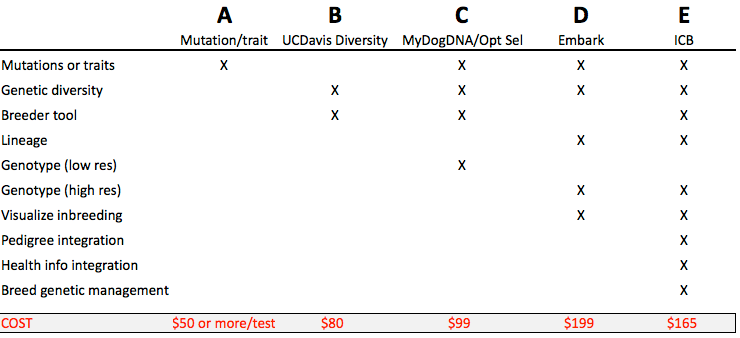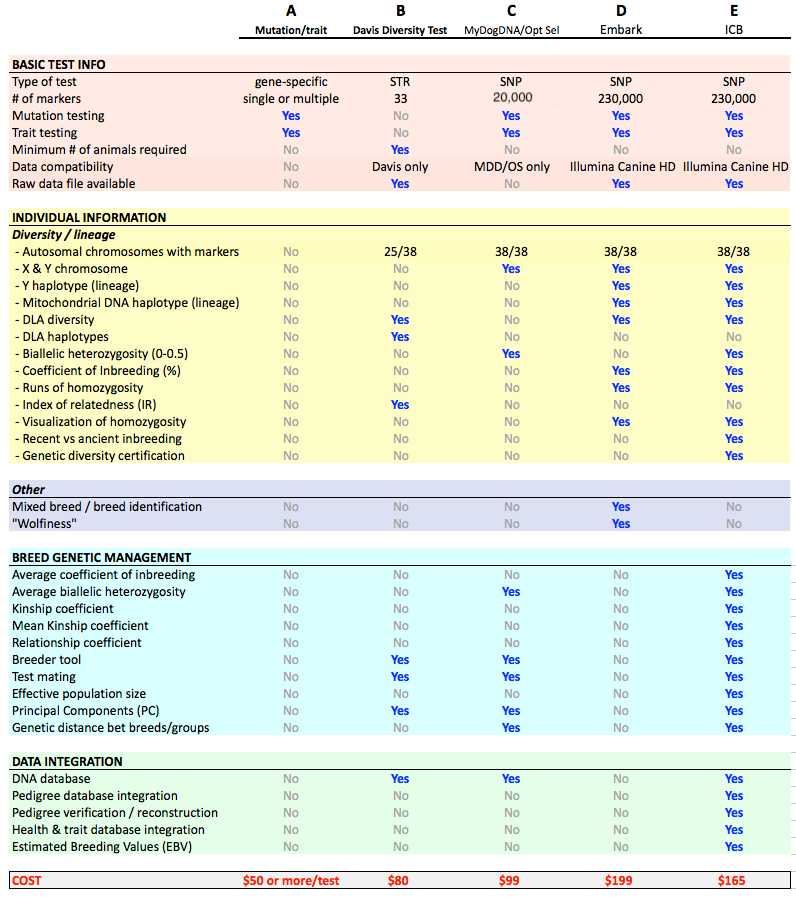It's nice to be spoiled for choice, but it can be difficult for breeders to decide among the options the one that will be best for you.
We've prepared some handy tables that summarize both the basic features as well as the details of the main options available. Once you decide what you need, you should be able to find the best test for your needs.
There are many options available to breeders and owners for DNA testing. Which service is best for you will depend on what information you need and how much you are willing to spend.
The most basic tests are for specific mutations (e.g., eye disorders, blood disorders) or traits (e.g., coat color, bob tail). Other tests offer combinations of genetic diversity, inbreeding, and genetic similarity between individuals. Some offer a breeder tool to assist in mate selection, downloadable raw data file, integration with pedigree and health databases. Some provide the capability for comprehensive breed-wide genetic management for breeds that need to improve the health of their gene pool by better distribution of genetic diversity or incorporating new diversity through cross-breeding.
With so many options, it can be confusing for breeders to identify the test service that best suits their needs. We have created a table that summarizes the most basic differences among the tests available, and below that is another table with more detail.
The "Mutation/trait" column refers to the labs that detect the genes for specific traits and mutations, either individually or as breed-specific panels. The other tests are the UC Davis genetic diversity test, MyDogDNA (Optimal Selection in the US), Embark Vet, and Institute of Canine Biology (ICB).
If you have any questions about this information, you can contact ICB at [email protected].
The specifications and offerings of these services might change. This page is current as of January 2017.
| ICB is working directly with breeders to design the most comprehensive and cost-effective genetic tools available anywhere, not only for individual breeding decisions, but also for genetic management and sustainable breeding. Learn more about how to use the ICB DNA testing and Breed Tool: |
ICB's online courses
*******************
Join our Facebook Group
ICB Breeding for the Future
...the science of dog breeding
*******************
Visit our Facebook Page
ICB Institute of Canine Biology
...the latest canine news and research



